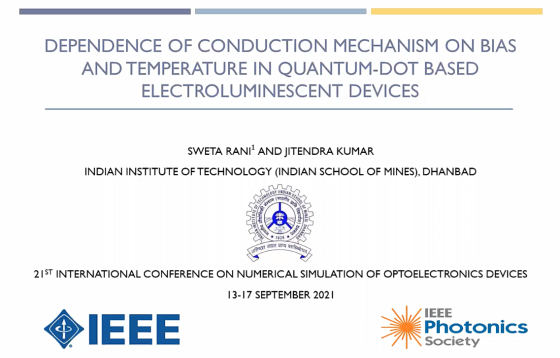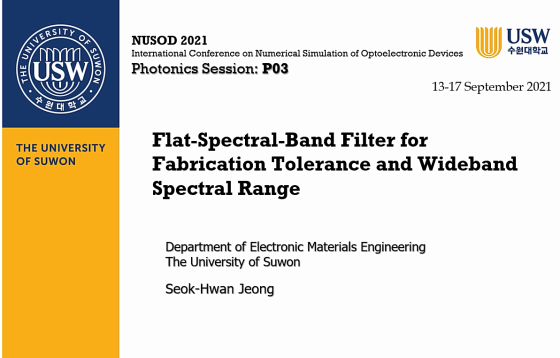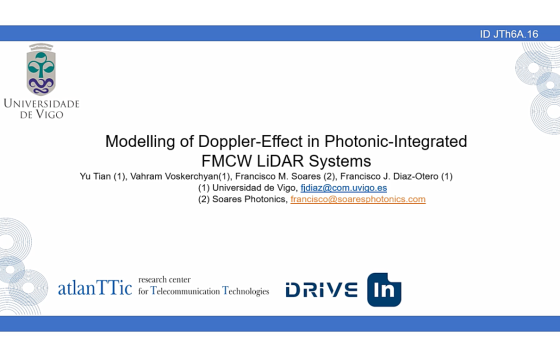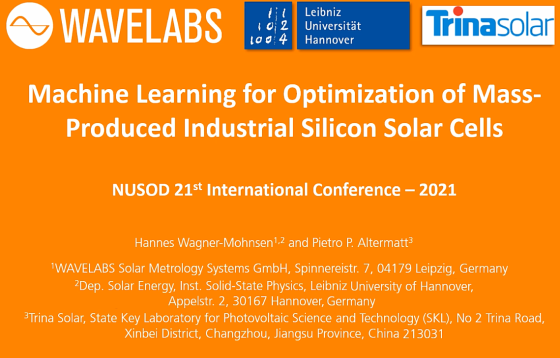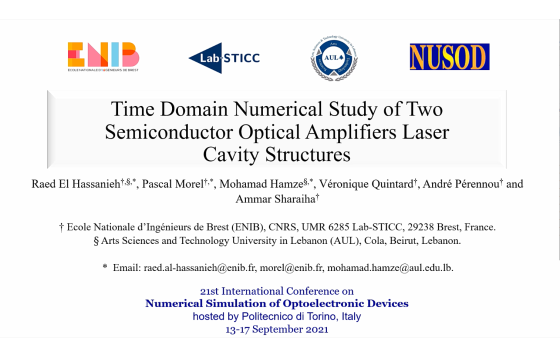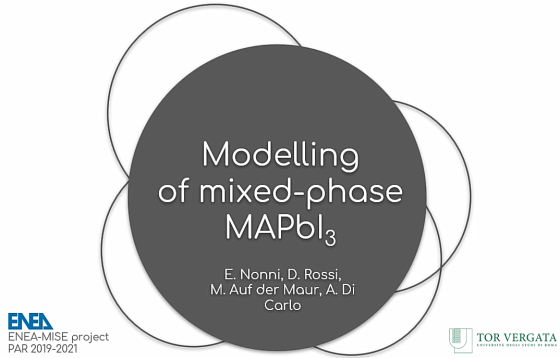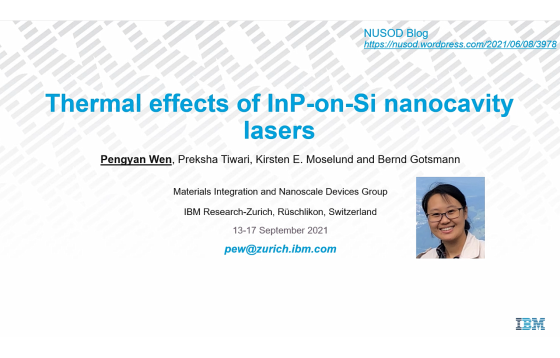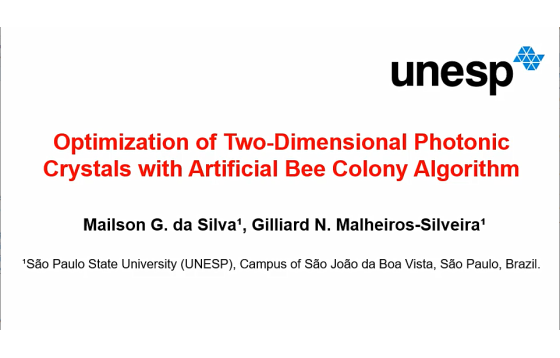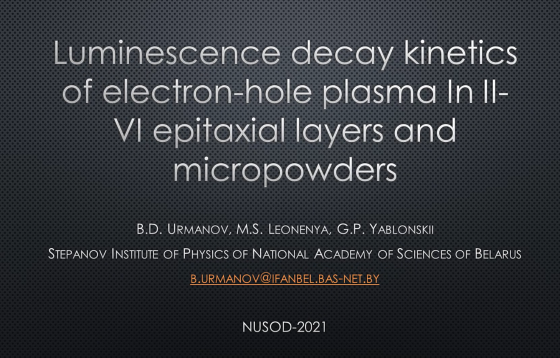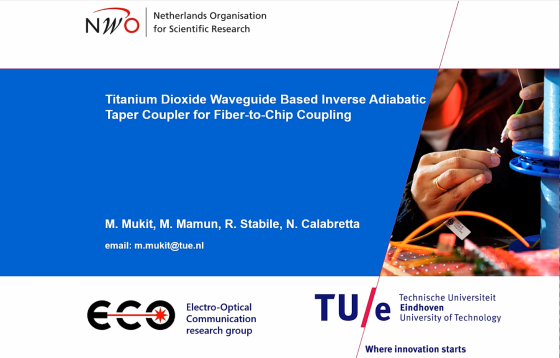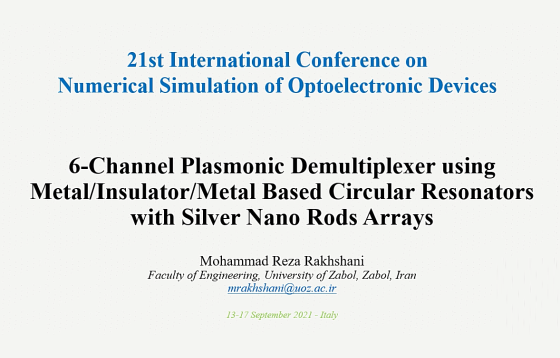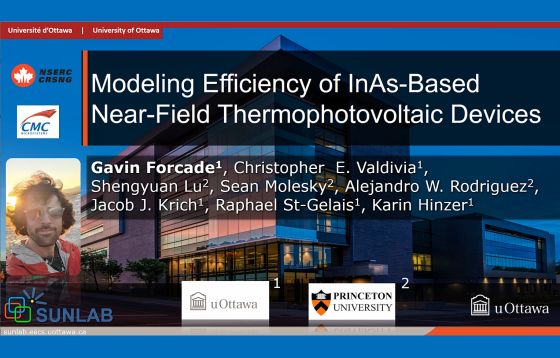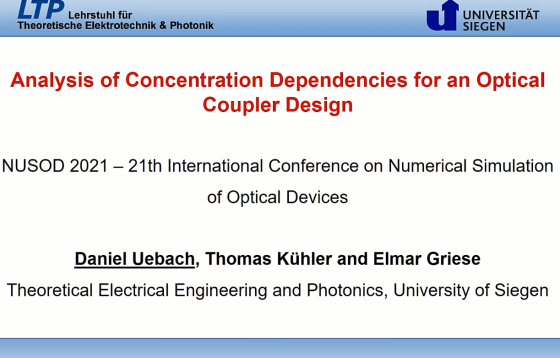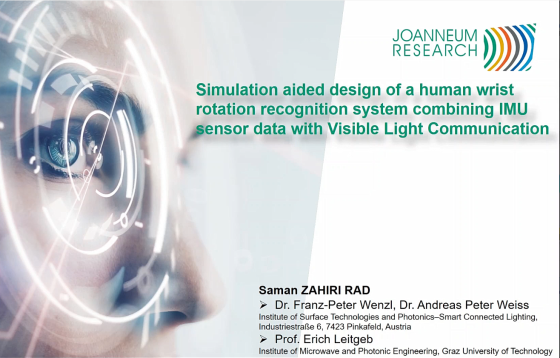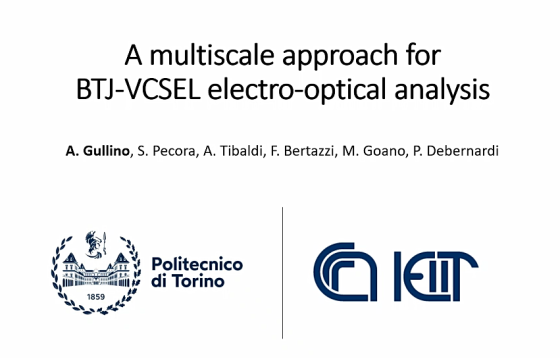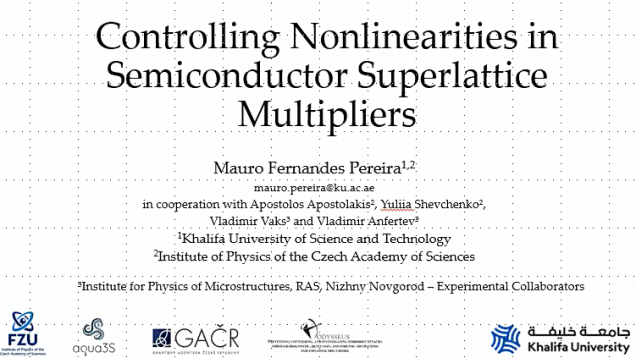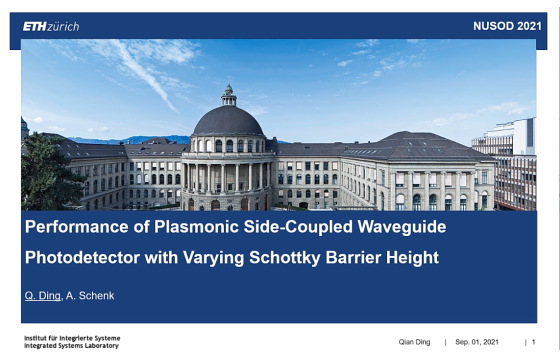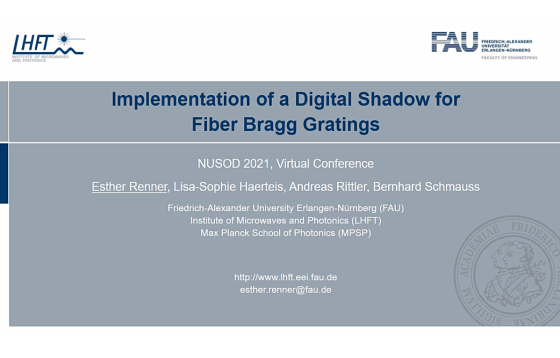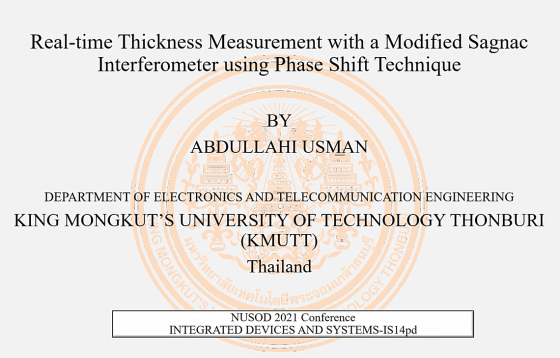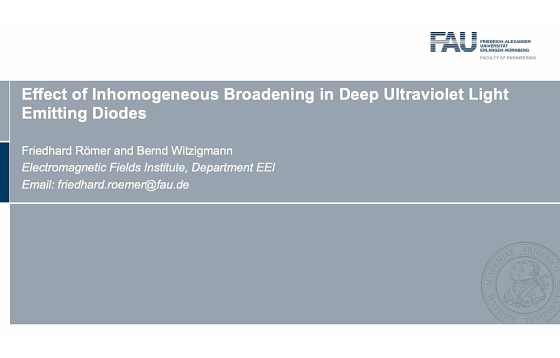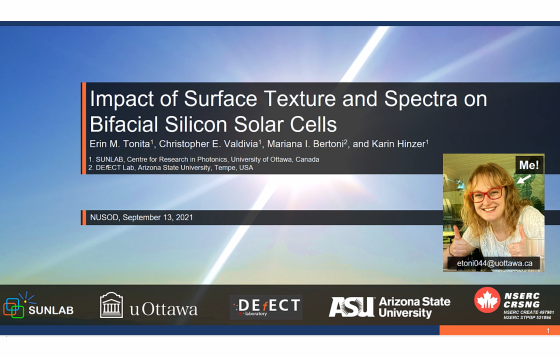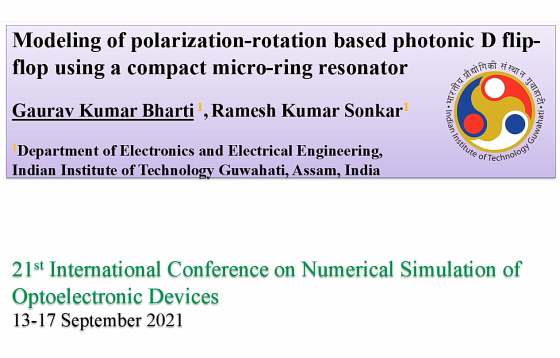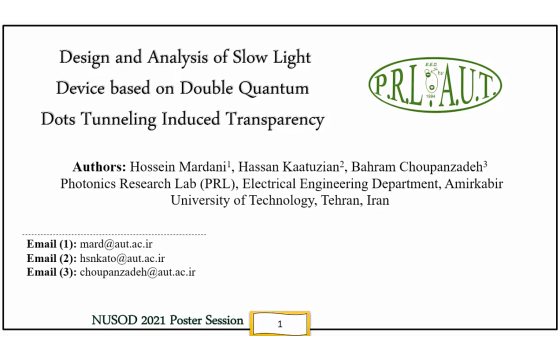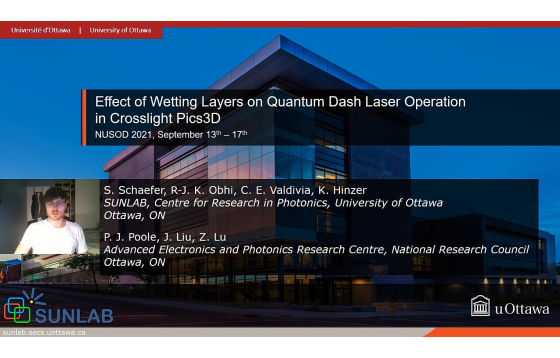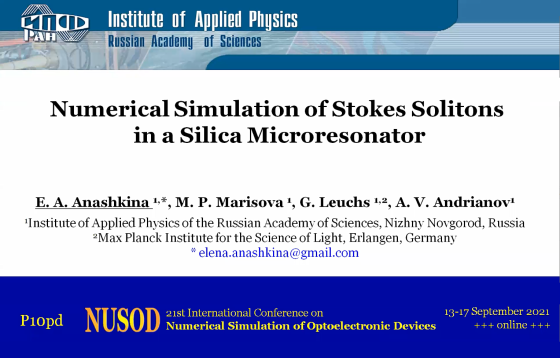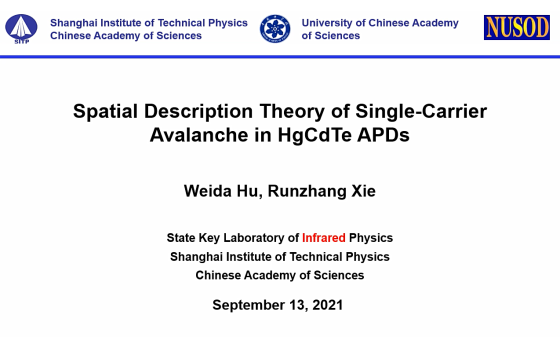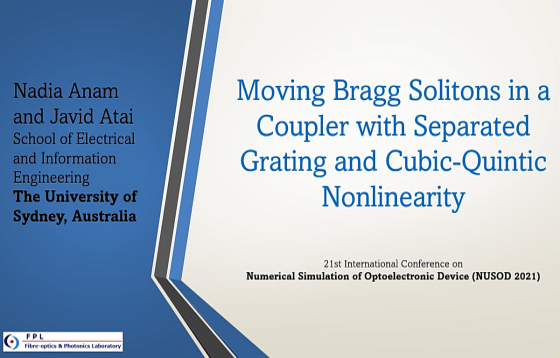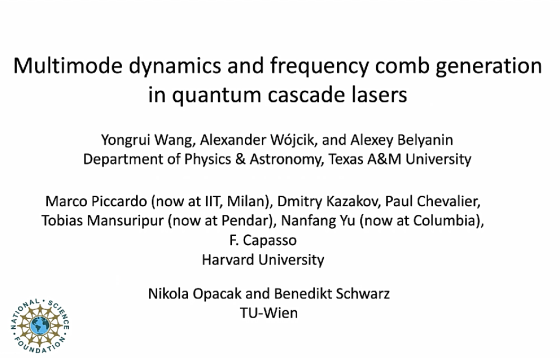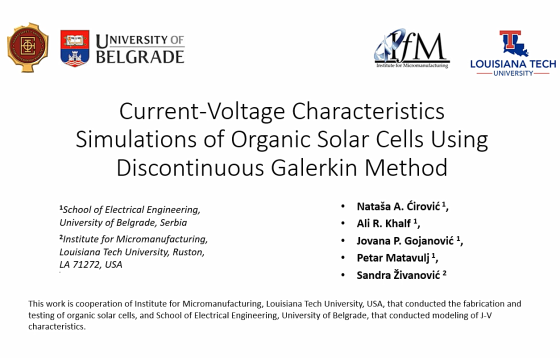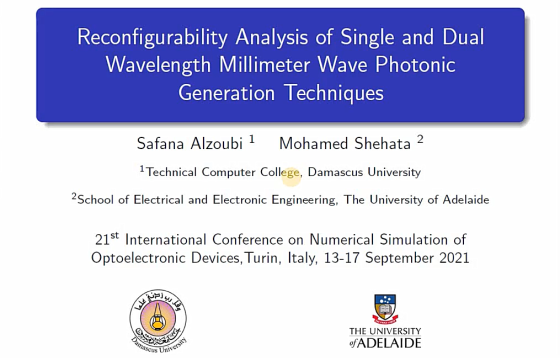


Quantum dots (QDs) provide some unique properties which make them preferable over other luminescent materials, one such property being adjustable and sharp emission which makes it an interesting candidate for electroluminescent devices. A QD based electroluminescent device has been taken into consideration in this theoretical study. The effect of the bias, temperature, the presence of […]
P03–Flat-Spectral-Band Filter for Fabrication Tolerance and Wideband Spectral Range
Novel scheme for silicon-wire type flat-topped wavelength filter is proposed and theoretically verified. Multimode interference couplers with symmetric and asymmetric splitting ratios used in a delayed interference type filter made filtering spectra flat over wide wavelength range of >80 nm with potentially better production yield
IS12pd–Modelling of mid-IR on-chip Doppler FMCW LiDAR System
We propose a generic model that can simulate the functioning of doppler LiDAR system from given target speed, working distance and modulation pattern. Simulations confirm that our model yield system performance consistent with the theoretical calculations.
SC02–Machine Learning for Optimization of Mass-Produced Industrial Silicon Solar Cells
We present a methodology where we combine numerical TCAD device modeling, machine learning and advanced statistics for getting a deeper understanding of how process variations influence device performance in mass produced crystalline silicon solar cells. For this, we use seven model input parameters that affect the mainstream solar cell design (PERC) and its performance the […]
IS06–Time Domain Numerical Study of Two Semiconductor Optical Amplifiers Laser Cavity Structures
In this paper, we develop a time domain model of a Semiconductor Optical Amplifiers Fiber Cavity Laser (SOAFCL). The time domain characteristics of two different cavity configurations (bidirectional and one-way cavity) are compared. The study shows that one-way cavity is less noisy compared to the bidirectional cavity which presents higher output power.
NM05–Modelling of mixed-phase MAPbI3
Both x-ray diffraction (XRD) and photoluminescence (PL) characterizations of methylammonium lead iodide perovskite (MAPbI3) reveal signatures of a coexistence of the tetragonal and orthorhombic phases over a wide range of temperatures, suggesting that the phase transition does not happen sharply at a temperature of 164 K as reported in literature. To understand the causes of […]
LD03–Thermal and optical simulation of InP on Si nanocavity lasers
Accurate prediction of thermal effects is important for scaled photonic devices as excessive heating may lead to device failure. This paper addresses numerical modeling of thermal properties of InP nanocavity lasers on Si combined with optical simulations in Lumerical and lasing threshold measurements. Different geometries with diameters ranging from 200 nm to 2 µm are […]
MM07–Optimization of Two-Dimensional Photonic Crystals with Artificial Bee Colony Algorithm
We applied the Artificial Bee Colony algorithm for the complete band gap maximization of a two-dimensional photonic crystal. The band diagram and band gap calculation were carried out by the software MIT Photonic Bands, and these results were used in the algorithm’s fitness function. The optimum structure was compared to the literature which used genetic […]
N09–Luminescence Decay Kinetics of Electron-Hole Plasma in II-VI Epitaxial Layers and Micropowders
The luminescence decay kinetics of epitaxial layers of ZnSe and micropowders of ZnSe and CdS were measured at room temperature and at high levels of optical excitation. Comparison of the experimental results with the theoretically calculated decay kinetics showed good agreement for the initial moment of time at high concentrations of nonequilibrium charge carriers.
P04–Titanium Dioxide Waveguide Based Inverse Adiabatic Taper Coupler for Fiber-to-Chip Coupling
We present an efficient fiber-to-chip coupling method for polarization independent single mode titanium dioxide-TiO2 waveguide. The proposed inverse adiabatic taper coupler between a lensed fiber and waveguide consists of a spot size converter and allows coupling efficiency of around 85%.
IS13pd–6‑Channel Plasmonic Demultiplexer using Metal/Insulator/Metal Based Circular Resonators with Silver Nano Rods Arrays
In this paper, we design and propose a compact 6-channel plasmonic demultiplexer (DMUX), utilizing of metal/insulator/metal (MIM) circular resonators (CRs) with metal nano‑rod arrays (NRAs). The resonance wavelengths of the output ports depend on the number of metallic NRAs in the CRs. For the numerical examination of the designed scheme, the finite‑difference time‑domain (FDTD) technique […]
SC03–Modeling Efficiency of InAs-Based Near-Field Thermophotovoltaic Devices
Enormous potential lies in waste-heat recycling for the world’s industrial sector. Portable solid-state modules are a universal low-maintenance method to recycle this waste-heat. One such technology, near-field thermophotovoltaics (NFTPV), relies on a heat source in extreme proximity (<200 nm) to a photovoltaic cell, which then generates electricity. We developed an optoelectronic model where electron-hole pair […]
IS07–Analysis of Concentration Dependencies for an Optical Directional Coupler Design
An integrated directional coupler is designed for a bidirectional communication on a single waveguide by separating both data streams within individual branches. Thereby, an adjustment of the numerical aperture of the transmitting branch is a promising optimization approach. As the couplers are manufactured by a field-assisted diffusion process the numerical aperture is directly related to […]
NM06–Simulation aided design of a human wrist rotation recognition system combining IMU sensor data with Visible Light Communication
Wrist worn mobile sensors have proven to be applicable for various applications, including fitness tracking or gesture recognition. In time- and security-critical application scenarios, the commonly used Radio frequency based communication technologies may pose a bottleneck for further advancements. In this work, we present a simulation environment implemented in Matlab/Simulink that enables the precise simulation […]
LD04–A multiscale approach for BTJ-VCSEL electro-optical analysis
This paper presents a theoretical comparison of the electro-optical characteristics of 850 nm GaAs/AlGaAs pinand BTJ-based VCSELs. The calculations are based on a drift-diffusion model coupled with a NEGF formalism, able to model accurately the tunneling across the TJ. The resulting LIV characteristics demonstrate promising improvements, at both 25 and 80 ◦C, enabled by TJ […]
MM08–Controlling Nonlinearities in Semiconductor Superlattice Multipliers
A hybrid approach combining Nonequilibrium Green’s Fuctions with solutions of the Boltzman equation, delivers voltage and intrinsic asymmetry control of nonlinearities in semiconductor superlattices. Unexpected nonlinear behavior is predicted for high harmonics as a result of voltage control.
D02–Performance of Plasmonic Side-Coupled Waveguide Photodetector with Varying Schottky Barrier Height
The impact of Schottky barrier height (SBH) on the performance of a side-coupled plasmonic waveguide photodetector (WGPD) is theoretically investigated by 3D optoelectrical simulations. A general decrease of the cut-off frequency is observed for all studied barrier heights (0.1 eV to 0.6 eV), most pronounced in the range (0.3 – 0.4) eV. The degradation is […]
P05–Implementation of a Digital Shadow for Fiber Bragg Gratings
We propose a synthesis model for fiber Bragg gratings (FBGs) to monitor temperature measurement errors due to aging behavior. This approach might be called a Digital Shadow since we are able to monitor all essential parameters of the grating to perform error prediction and consequently compensation. The model is tested during accelerated aging experiments, which […]
IS14pd–Real-time Thickness Measurement with a Modified Sagnac Interferometer Using Phase Shift Technique
The modified Sagnac interferometer with a phase-shift approach is given here for measuring Ta2O5 thin-film thickness. The input light is split into reference and sample beams. A real-time signal measurement is performed to get the output intensities of both beams with four different polarizer settings. These intensities can then be effectively converted into film thickness.
LED01–Effect of Inhomogeneous Broadening in Deep Ultraviolet Light Emitting Diodes
Due to their small dimensions deep ultraviolet (DUV) light emitting diodes (LED) are highly attractive light sources for environmental and medical applications. DUV LEDs generate light in active quantum wells (QW) made of Aluminium Gallium Nitride. The QWs are not lattice matched to the substrate and only few monolayers thick making them susceptible to compound […]
SC04–Impact of surface texture on bifacial silicon heterojunction solar cell carrier loss
We investigate the impact of surface texturing on current loss as a function of depth and wavelength in high efficiency bifacial silicon heterojunction solar cells operating at their maximum power output. We couple 3D ray tracing with TMM thin-film boundary conditions for optical simulations and solve Poisson’s drift-diffusion equations to calculate carrier recombination under both […]
IS09–Modeling of polarization-rotation based photonic D flip-flop using a compact micro-ring resonator
This paper demonstrates the modeling and simulation of all-optical polarization rotation based clocked D flip-flop using a single micro-ring resonator. The simulated results show the switching time of 0.5 ps and the on-off ratio of 25.27 dB.
NM07–Design and Analysis of Slow Light Device based on Double Quantum Dots Tunneling Induced Transparency
Slow light Transparency window can be achieved with the help of Electromagnetically Induced Transparency (EIT) method and Tunneling Induced Transparency (TIT) method accompanied by observing tunneling effect between InAs quantum dot structure with energy gap of 0.35 eV and a thin layer of GaAs potential barrier with energy gap of 1.42 eV. By investigating different […]
LD06–Effect of Wetting Layers on Quantum Dash Laser Operation in Crosslight PICS3D
We discuss the integration of quantum dashes (QDashes) into laser simulations using Crosslight Pics3D, outlining the approach for developing a model featuring asymmetrical active regions. The importance of including wetting layers to accurately represent carrier transport is investigated using results obtained for an InAs/InP QDash laser. While leakage current across the active region is unaffected […]
P10pd–Numerical Simulation of Stokes Solitons in a Silica Microresonator
We report a novel generation regime of Stokes solitons numerically found in a silica microresonator in the framework of the generalized Raman-modified Lugiato-Lefever equation. These solitons can be attained for certain parameters in the anomalous dispersion range when the pump is in the normal dispersion range. We also demonstrate the Stokes soliton-like experimental spectrum similar […]
D01–Probability Theory of Single-Carrier Avalanche in HgCdTe APDs as a Stochastic Process
Recent researches have proven that HgCdTe is a good material to acquire both high multiplication and low excess noise factor at the same time in avalanche photodiodes (APDs). As a pseudo-binary narrow bandgap semiconductor material, HgCdTe exhibits high conduction band nonparabolicity as well as strong alloy scattering, especially for hot electrons, which changes the dynamics […]
P06–Moving Bragg Solitons in a Coupler with Separated Grating and Cubic-Quintic Nonlinearity
We investigate the existence and stability of moving solitons a semilinear directional coupler where one core has cubic-quintic nonlinearity and the other core is linear with uniform Bragg grating.
LD01–Multimode Dynamics and Frequency Comb Generation in Quantum Cascade Lasers
In this talk I will discuss how resonant light-matter interaction in the gain medium of quantum cascade lasers gives rise to a rich nonlinear multimode dynamics and a variety of phase-locked multimode regimes, most notably optical frequency combs with separation between the comb lines changing from one to many dozen round-trip frequencies. I will review […]
SC05–Current-Voltage Characteristics Simulations of Organic Solar Cells Using Discontinuous Galerkin Method
The steady state drift-diffusion model (DDM) of organic solar cells that considers the surface recombination processes for majority and minority carriers, as well as their thermionic emission on both electrodes, is presented in this paper. When the full Robin boundary conditions (BCs) and the popular finite difference method with Schaffeter-Gummel discretization (FDSG) were applied, significant […]
IS10–Reconfigurability Analysis of Single and Dual Wavelength Millimeter Wave Photonic Generation Techniques
Optimizing the operating conditions of a Mach-Zhender modulator (MZM) for different design requirements has drawn considerable research interests due to its key role as an electro-optic (EO) interface in hybrid access radio-over-fiber networks. In this work, we compare the modulation efficiency and the bit error rate (BER) performances of single and dual-wavelength-modulated millimeter-wave (MMW) photonic […]

